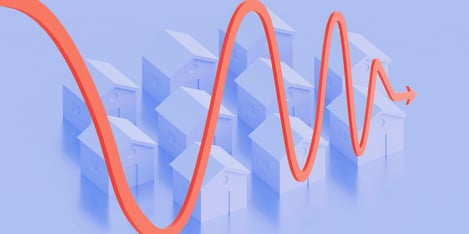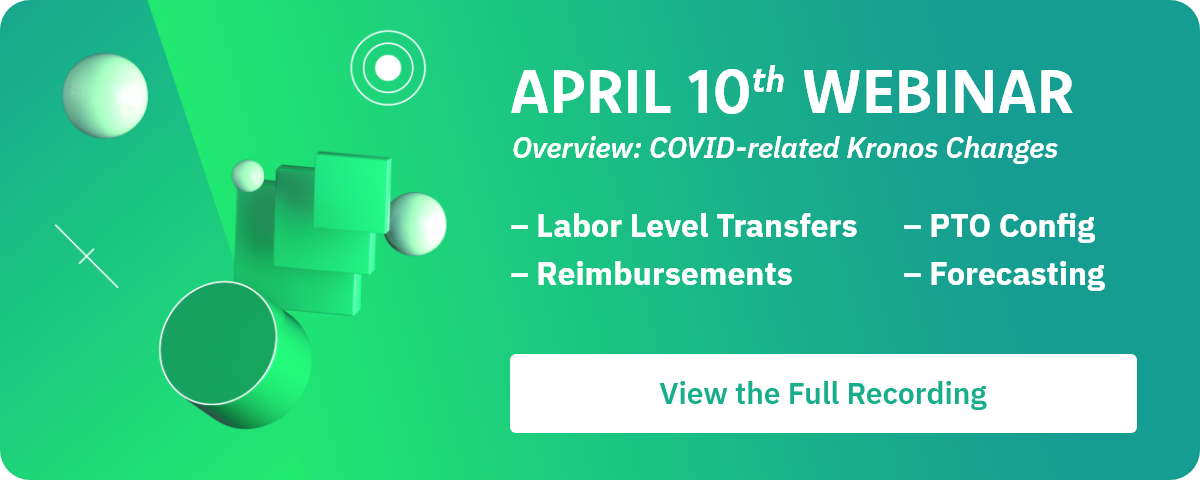

If there’s one business task that feels pointless during a pandemic, it’s the practice of Forecasting. Still, Kronos users have an edge. Whether your business is fully or partially open, using Kronos Forecasting may prove to be a valuable piece of your reopening efforts.
The ability for companies (especially retailers) to Forecast is critical to present and future success. Forecasting allows an organization to see what its schedules, volume, and sales are going to look like regularly for the months and year to come based on past and present data. Whether the result of that Forecasting is good or bad, it’s a critical tool that impacts daily decision-making.
“There’s no doubt that Forecasting feels odd right now, but there are ways to leverage your Kronos software to gain insights to move your business forward,” says Improv Application Consultant Carlos Verdin. "Every Forecast map has some coverage spikes that are usually thrown off by the data that’s entered in, but the Exponential Smoothing function in Kronos allows us to round that data out and produce more a more reasonable forecast based on current pandemic conditions.”

Even in a pandemic-influenced economy, gaining even limited Forecasting can help you:
-
Understand consumers' current spending patterns and your need for inventory
-
Anticipate demand to help you reduce understaffing
-
Help you control labor costs by reducing overstaffing
-
Strengthen your compliance
-
Help you maximize your resources over the long run by giving you a realistic view of sales
There are several approaches to Forecasting right now that could prove useful based on your industry. Here are just a few options to consider that apply to Workforce Central (Forecast Manager) and Workforce Dimensions (Forecasting).
Special Events
Your Special Events tool in Kronos Forecasting is used to highlight unusual past or future business activity is usually grouped into the following categories: Major Holidays (think Thanksgiving), Milestone Events (think graduation), Unexpected Special Events (think weather, closed stores).
Please note: Kronos recently advised customers not to classify a store closure due to the pandemic as a Special Event. Naming it as such will result in traditional algorithms — like Daily Trend and Exponential Smoothing — not having enough data to pull a good Forecast. A better approach: Create a New Special Event that won’t skew overall forecasting data.
So, who is ready to be a full-time shapeshifter in these precarious times? (Hint: If you raised your hand, imperfect Forecasting will be a friend and not a foe in the days to come.)
Exponential Smoothing
In addition to creating New Special Events, the Exponential Smoothing algorithm is the most reliable algorithm to use during erratic business conditions, according to Carlos.
In a recent Improv webinar, Carlos recommended the Exponential Smoothing algorithm as the most robust solution for pandemic-related Forecasting. (In fact, you can download that webinar at the end of this post for a deeper dive on Forecasting.) The Exponential Smoothing algorithm, says Carlos, allows you to track current business activity and generate a Forecast from small amounts of data (as little as three weeks).
How is this even possible, and is the Forecast reliable?
Reliable, but not perfect in our current business environment, says Carlos.
The Exponential Smoothing algorithm uses a complex statistical analysis that is more accurate than historical data. Exponential Smoothing applies a “smoothed” or weighted average to the corresponding past day of the week.
This method can be used within the Workforce Central Forecast Manager and Workforce Dimensions Forecasting. According to Kronos, The Machine Learning algorithm for Workforce Dimensions customers is also proving helpful in Forecasting erratic business activity.
Next Phase Forecasting
Better days are ahead. And when they arrive — once volume stabilizes — you can improve Forecasting by importing Actuals from the prior year (but before the date being used by the Forecast). Once data is consistent, you can incorporate Daily Trend with Exponential Smoothing.
Daily Trend Algorithm. Daily Trend is not an algorithm you want to use for the current pandemic workflow, but it’s a key part of the Forecasting in Kronos you will no doubt return to once your business is stabilized. The Daily Trend algorithm grabs historical data from both current and prior years to capture cyclical variations that are common in the retail environment.
Adaptive Forecasting Algorithm. Not a recommended algorithm for use during or shortly after a reopening. Adaptive Forecasting calculates recurring seasonal trends in a company's historical data and considers how business volume fluctuates over a year. In WFC, this algorithm is typically used with the Daily Trend and Exponential Smoothing for more accurate volume forecasting.
“The current business circumstances are not ideal, so the available means of Forecasting won’t give us 100% accuracy,” says Carlos. “But, Exponential Smoothing will give us something better than not having any data at all. And, right now, that little bit of Forecasting data could help a company make the next best decision."
Better Solutions. Faster.
Do you need help with your Kronos Forecasting for Workforce Central or Workforce Dimensions? Improv can help. Our senior-level, full-time Kronos consultants can give you fast, accurate workforce solutions designed to get your business back on track. Let's talk today.





Comments